February 24, 2020
Park Hosts Record Visitors in 2019
More than 12.5 million visitors came to the Great Smoky Mountains National Park in 2019, an increase of more than 1 million over 2018. The three main entrances, which accounted for more than two thirds of all park visitation, are near Gatlinburg, Townsend, and Cherokee.
Monthly visitation records were set during January, March, April, June, and May. Park Superintendent Cassius Cash said in a recent issue of the Great Smoky Mountains Association newsletter, “I am very proud of our employees who work hard each day, along with our volunteers and partners, to help provide outstanding visitor experiences and to protect the resources that people come here to enjoy.”
Chief Ranger Lisa Hendy is intent on ensuring that visitors enjoy the park safely. Her focus is on Preventive Search and Rescue. You can find out more about her plans in the Spring 2020 issue of Smokies Life Magazine http://www.smokiesinformation.org.
Tips for Avoiding Crowds
The Park reports that most people tour the park between 10 am and 6 pm. By visiting earlier, or later, you will find the trails less crowded. The most heavily used areas of the Park are the Cades Cove Loop Road and the Newfound Gap Road. Lesser-used places include Abrams Creek, Balsam Mountain, Cosby, Fontana Lake, and Heintooga Ridge Road.
The peak seasons in the Smokies are the months of June and July and October. Visiting at other times mean fewer other guests.
Luckily for our guests, Buckhorn Inn is located out of the crowds in Gatlinburg and Pigeon Forge. We are only a mile and a half from the Greenbrier entrance to the Park, which is one of the lesser used. And finally, our Great Winter Escape and Great Summer Escape packages coincide with the quieter times in the Park! We look forward to seeing you soon.
October 22, 2019
Grandma Gatewood and her Inspiring Story
Have you ever heard of Grandma Gatewood? She was the first woman to hike the Appalachian Trail by herself. She also was the first person to walk it three times. Even more surprising is that she did all of this after age 65!
Ben Montgomery’s book “Grandma Gatewood’s Walk: The Inspiring Story of the Woman Who Saved the Appalachian Trail” http://www.amazon.com was published by Chicago Review Press in 2016. This is the story of a great-grandmother who left her small Ohio town with a change of clothes, a pair of thin-soled sneakers, and less than $200. She did not have a tent nor any professional hiking gear. By September 1955 she was standing atop Maine’s Mount Katahdin proclaiming “I said I’ll do it, and I’ve done it.” Emma Gatewood had lived through poverty, an abusive husband, and raised 11 children before she began her walk.
On the trail she faced fierce storms and saw the beauty of nature. She walked up steep ridges and down treacherous ravines. She often relied
on the kindness of other hikers or community members to keep going. It is not only a tale of grit and determination, but also of the healing power of nature.
The author interviewed family members and others that Gatewood met along her journey. He also had access to her trail journals and diaries as well as media coverage of her amazing journey.
Grandma Gatewood Benefitted the Trail
Gatewood became a celebrated hiker. She appeared on television programs with Groucho Marx and Art Linkletter. Her celebrity brought public attention to the Appalachian Trail. She was not shy about voicing criticism of parts of the trail which were not well-maintained and hence difficult. This public spotlight led to enhanced trail maintenance. Many believe that this attention very likely saved the trail from extinction.
At age seventy-one she hiked the 2,000 mile Oregon Trail. By the time she passed away at age 85, she likely had hiked more than 10,000 miles!
April 1, 2019
GSMNP Protects One of Last U.S. Wild Trout Habitats
Did you know that 20% of the 2,900 miles of streams in the Great Smoky Mountains National Park are large enough to support trout populations? The Park offers a variety of fishing experiences, from going after trout in remote, headwater streams to angling for smallmouth bass in large, coolwater streams. Most of these streams remain at or near their carrying capacity of fish, according to the Park. Therefore, you have a great opportunity to catch these beauties throughout the year!
The Park permits fishing year-round, from 30 minutes before sunrise to 30 minutes after sunset in all streams. Tennessee residents and nonresidents age 13 and older must have a valid fishing license. The daily possession limits are five brook, rainbow, or brown trout or smallmouth bass. Twenty rock bass may be kept in addition to the above limit. Fishermen may use only artificial flies or lures and a single hand-held rod. Additional information is available from the park at http://www.nps.gov/grsm/planyourvisit/fishing.htm To trout fish in Gatlinburg, you must purchase a special license. The city does not allow fishing on Thursdays.
There are 67 different species of fish in the park. Brooks are the only trout native to the Smokies, although rainbows and browns have been introduced and are found in most large streams. Long-term monitoring indicates that fishermen play practically no role in the fish population changes. Major spring floods and summer droughts have much more effect both inside, and outside, the park.
Local Trout Fishing Guides Available
Local outfitters provide everything from rods and reels to professional guides. These local experts can offer tips and insights for any skill level. They know on what the fish are biting on any given day! Spending a day with a local guide can speed up the learning curve. You can research guides on your own, or ask advice from a local fishing shop.
If you are new to fishing, many experts recommend the East Prong and the West Prong of the Little Pigeon River. Both areas are easily accessible and offer medium to large fish.
And if fishing is not your thing, just watch our online menu and make a reservation for trout night at Buckhorn Inn!
January 28, 2019
National Park Resumes Regular Operations
We are sharing this news from the Great Smoky Mountains National Park (GSMNP).
With the enactment of the continuing resolution, staff at GSMNP resumed regular operations beginning Saturday, January 26. Many basic services were accessible to visitors on weekends and holiday periods throughout the shutdown period using a combination of partner funds and revenue generated by recreation fees. Visitor centers are now accessible seven days a week and reservation services for the frontcountry and backcountry are fully operational.
Visitors may experience delayed openings this spring at some campgrounds, picnic areas, and seasonal roads due to a reduced timeline for seasonal staff hiring and project planning. An updated operating schedule will be posted on http://www.nps.gov/grsm as soon it is available.
Park Superintendent Thanks Community
“On behalf of the employees of Great Smoky Mountains National Park, I want to express our heartfelt gratitude to our partners and communities for their unwavering support over the last five weeks,” said Superintendent Cassius Cash. “In addition to the monetary support offered by our partners to provide basic visitor services, we were moved by the number of people and organizations who stepped up to organize litter pickups and the outpouring of generosity expressed to our employees through meals and gift cards.”
All staff, including biologists, engineers, education rangers, and administrators have resumed work functions critical for year-round park operations. Employees are glad to be back at work protecting resources and assisting visitors in having a safe and enjoyable experience. If you are interested in helping take care of the park, please visit http://www.nps.gov/grsm/getinvolved/volunteer.htm for more information on how to become a volunteer.
The GSMNP is a true treasure. We are fortunate to have such a beautiful, unspoiled area to enjoy. We applaud the staff for their year-round assistance in maintaining this natural resource.
January 7, 2019
Plenty of Winter Activities in our Area
Need a winter get-away? While summer is the peak tourist season, our area offers plenty to see and do.
Gatlinburg is gussied up through February for Winterfest. Literally millions of lights and displays make the area glow. This is a great time of year to stroll the downtown streets, admire the lights, and visit some of the shops and restaurants. Because there are not the crowds of summer and fall, now is the time to visit some of the local indoor attractions. You might want to check out Ripley’s Aquarium of the Smokies, the new Ripley’s Believe It or Not, and the Guinness World of Records Museum. The mild
seasonal weather also makes it a great time to visit Ober Gatlinburg. The resort has eight ski trails with varying levels of difficulty for beginners, intermediate, and experienced skiers and snow boarders. Certified instructors are available and an on-site shop rents skis and other equipment. The view from Anakeesta goes on for miles! Enjoy a meal or a snack, try your hand at zip-lining, or enjoy the treetop walk.
Winter Hiking
In this area about half the days in winter have high temperatures at more than 50 degrees F, making it very comfortable for hiking. Fewer tourists means more quiet. The absence of the leaves opens new vistas. It is easy to spot the stone walls, chimneys, foundations, and other reminders of past residents of the area. If there is snow on the ground, spotting and identifying animal tracks adds to the fun of your hike. If the weather has been below freezing for a length of time, you will see frozen waterfalls, sparkling icicles, and azure blue skies. Please note that as of today the federal government shutdown is still in force. That means that for most national parks there will be no park-provided services such as restrooms, trash collection, facilities, or road maintenance. For information go to the park website https://www.nps.gov/grsm/index.html. Before you start out, be sure to check the weather in the area you intend to hike. In addition to temperature and precipitation, wind is an important consideration. Limbs blowing down create danger. Our guests report that some of their favorite winter hiking trails are: Rainbow Falls, Porters Creek, Max Patch, and Andrews Bald. Please share some of your favorite hiking adventures!
August 27, 2018
Hikes and Activities in the GSMNP
The Great Smoky Mountains Association has shared some information on upcoming hikes and other outdoor activities.
Upcoming Hikes
Sunday, September 2, 2018, 9:00 a.m. Alum Cave Trail–Great Smoky Mountains National Park, Tennessee. When you hike Alum Cave Trail, you’ll travel the park’s latest Trails Forever success story. What was once a worn path is now a safer, smoother trip along one of the most scenic trails in the Smokies. Join professional guide Liz Domingue to explore the beauty of this trail. The hike is 5 miles and is rated moderate to strenuous.
Saturday, September 22, 2018, 8:30 a.m. Swain County Visitor Center and Museum, Bryson City, North Carolina. History in the Noland Creek Valley runs deep. During the late 1800s and into the early 19002 this remote area was home to farmers and their families. In 1905 the Harris-Woodbury Lumber Company purchased 17,000 acres but spared the Noland watershed from logging operations. Surrounded by natural beauty, Steve Kemp, award-winning author and Smokies historian, will interpret the history and uses of the area. The hike is about 12 miles and is rated moderate to strenuous due to the length.
Other Activities
Monarch Butterfly Tagging: A Citizen Science Program, Cades Cove, Tennessee. The program is being
held at 9:00 a.m. on Saturday, September 22, Sunday, September 30, and Saturday, October 6, 2018. Monarchs are the only known butterfly species to make a true migration in North America. Many of the monarchs we see traveling through East Tennessee are on a 2,000 mile journey to spend winter among forests high in the mountains of Mexico. The Great Smoky Mountains Association monarch tagging program gets you involved by collecting data that will help scientists answer questions about the origins of monarchs that reach Mexico, the timing and pace of the migration, mortality during the migration, and changes in geographic distribution. Plan on 3 miles of hiking that is rated easy.
For more information on these, and other, activities, please visit the Great Smoky Mountains Association at http://www.smokiesinformation.org.
July 23, 2018
Amazing Biodiversity in the Great Smoky Mountains
The term “biodiversity” refers to the variety of plants, fungi, animals, and other organisms that can be found in a particular location. The Great Smoky Mountains is the most biodiverse park in the National Park System. The more than 800 square miles of the park contains more than 19,000 documented species. Some scientists believe an additional 80,000 to 100,000 species may be found here.
What are the Reasons for such Biodiversity?
According to the National Park Service, mountains, climate, and weather are the big reasons. http://www.nps.gov/grsm/learn/nature/index.htm The Smokies are among the oldest mountain ranges in the world. The plant-covered mountains were formed as long as 300 million years ago. Elevations in the park range from 850 to 6,643 feet. This range is similar to what one would find from Georgia to Maine. More than 95% of the park is covered with forest, much of it old-growth. The park is home to 100 species of native trees. The abundant rainfall and high humidity provide good growing conditions. It is interesting to note that the relative humidity in the Smokies in the summertime is about twice that of the Rocky Mountain region.
The north/south positioning of the Appalachian chain allowed the Smokies to become a home for many plants and animals that sought refuge from the glaciers of the last ice age. More than 1,500 flowering plant species have been identified in the Great Smoky Mountains National Park. Scientists report that the park also is home to more than 200 bird species, 68 species of mammals, 67 native fish species, 39 species of reptiles, and 43 species of amphibians.
The University of Tennessee has worked with the Great Smoky Mountains National Park to create the Species Mapper. The Species Mapper uses information from observations and research studies to predict where various species may be found in the Park. As more observations are added to the model, it becomes more accurate.
We will use this blog space to share an occasional series of articles focusing on the amazing biodiversity of our area.
July 9, 2018
Black Bears in the Smokies
The Great Smoky Mountains National Park is a large, protected area where black bears can roam freely. The park service estimates that about 1,500 bears live in the park–that translates to a density of about two of the animals per square mile. Sighting one of these magnificent creatures is a highlight of a vacation, but caution is necessary for the protection of the bear and of the tourist. Bears can live 12-15 years or more in the wild, but those which have had access to human food and garbage have a life expectancy of only half that time.
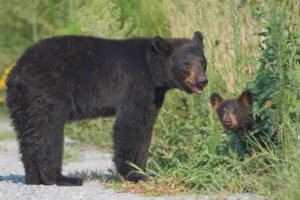
Black bear (Ursus americanus) mother standing in the road with young cub peeking out from the bushes.
Behavior of Bears
Like us, bears are omnivores. Berries and nuts make up about 85% of their diet. Insects and carrion are valuable sources of protein. These creatures have a very keen sense of smell. Feeding bears, or allowing them access to human food and garbage causes a number of problems. It causes them to lose their instinctive fear of humans. Over time this means they may begin approaching people and may become more unpredictable and dangerous. They may begin to pose a risk to public safety and must be euthanized. In other cases they come close to human areas and are hit by cars or become easy targets for poachers. The park service warns us that Garbage Kills Bears!
What Do I Do If I See Bears?
They are beautiful creatures. But remember that they have color vision, a keen sense of smell, are good swimmers and tree climbers, and can run 30 miles per hour. The park service provides a short video to help tourists understand what to do if they see a bear http://www.nps.gov/grsm/learn/nature/black-bears.htm If you do see a bear you should remain watchful and not approach it. Do not allow the bear to approach you. Being too close may promote aggressive behavior from the bear. For these reasons, willfully approaching within 50 yards (150 feet) or any distance that disturbs or displaces a bear, is illegal in the park. Use binoculars or a telephoto lens to view them.
If the bear approaches you, don’t run but rather back slowly away. The bear will probably do the same. If he continues to approach you, change your direction. If he continues, stand your ground and talk loudly or shout at it. Make yourself look as large as possible. Use a stout stick to intimidate the bear. It is very rare that you would be physically attacked, but if so you should not play dead. Fight back aggressively with any available object.
Remember, the goal of bear management is to keep these magnificent animals shy, secretive, and afraid of people.
June 4, 2018
Fishing in the Great Smoky Mountains National Park
Many of our guests are fishing enthusiasts. They find the Buckhorn Inn makes a great base of operations for spending the day on the water and returning home to pampered comfort. Reports are that the fishing is good this spring. Today we welcome guest blogger, CJ Stancil, to give us the latest.
This time of year is a beautiful time to fish in the Great Smoky Mountains National Park. Not only are the trout biting but the scenery is amazing. The Park has abundant species of wild flowers and plant life that are just now coming into peak. Wildlife that call the Smokies home in its half-million acre wilderness are black bear, whitetail deer, turkey and elk.
Area Known for Good Fishing
The Park has nearly 800 miles of fishable waters that hold trout. Wild brown trout, rainbow trout, and native brook trout are the species you will find here.
The trout here make the Great Smoky Mountains National Park one of the country’s most popular fishing destinations. Even a beginner can expect to catch these wild trout. Heavy rain has made the waters rise recently but the forecast is looking better. Cooler temperatures and sunny weather should last most of the week. Dry flies are getting a lot of action. Try running a dry dropper setup. If the water is high and stained, throw an indicator rig. Work combinations like a pheasant tail, pats rubber let, or a squirmy worm. Make sure you are getting the flies down deep and fast. Good luck and tight lines! CJ Stancil
Many of our guests have fished with CJ and report a great experience. You may contact him to book a trip through the Smoky Mountain Angler http://www.smokymountainangler.com or by email [email protected]. CJ also has offered his phone number 931-801-4204. To see some photos of beautiful trout, be sure to follow him on Instagram at @dancewithtrout.
April 3, 2018
Elk Thrive in Great Smoky Mountains National Park
Visitors to the Great Smoky Mountains National Park look forward to spotting our large wildlife–namely bear and elk. We are fortunate indeed to be located near such splendor.
Did you know that once large numbers of elk freely roamed the Appalachian Mountains and eastern United States? Unfortunately, overhunting and destruction of habitat severely lowered their numbers. Conservation groups became concerned that the animals would eventually become extinct. The last of the magnificent beasts disappeared from Tennessee in the mid 1800’s.
In 2001 the National Park Service reintroduced elk to the Great Smoky Mountains National Park. Twenty-five of the animals were moved to the park then, and 27 more were placed here in 2002. The elk (or wapiti) wear radio collars and ear tags to aid conservationists in tracking their range and movements. The herd now numbers as many as 200 animals.
These are the largest animals in the Smokies. The bulls weigh 600 to 700 pounds, measure 7 to 10 feet long, and sport antlers that can measure 5 feet from tip to tip.
Safe Viewing of Elk in the Park
The best times to view these animals are early in the morning and late in the evening. They also are more active after storms or on cloudy days. Most of them are located in the Cataloochee area in the southeastern section of the park, easily accessible from the Buckhorn Inn. This is a lovely area to hike and picnic as well. Always view these wild animals from a safe distance, using binoculars or a camera for close-ups. Be especially careful of calves as there likely is an anxious mother nearby. The males may perceive you as a challenger and charge. The National Park Service offers a short video about safely viewing elk. You may find a link to it at http://www.nps.gov/grsm/learn/nature/elk.htm
During March and April the animals begin to shed their antlers. Please note that it is not legal to remove antlers from the park. The discarded antlers are a rich source of calcium for other wildlife in the park.




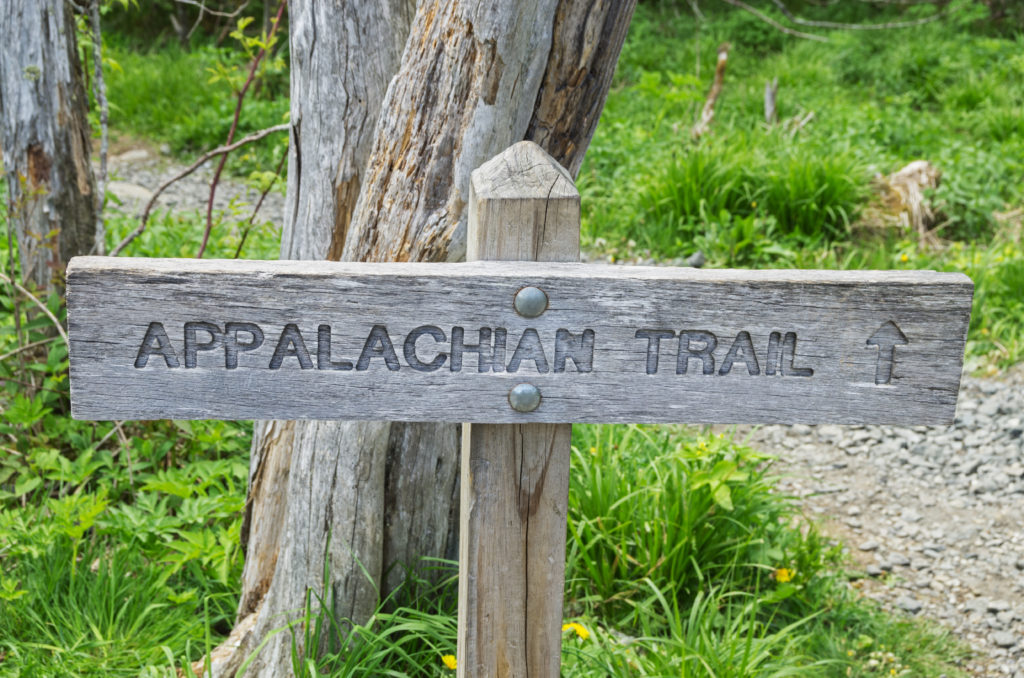
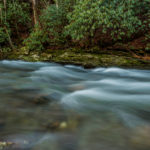

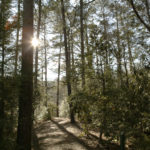


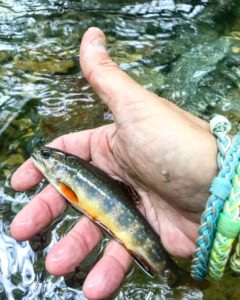
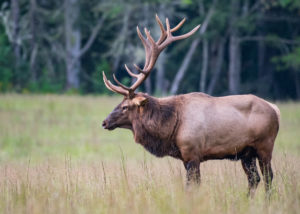

Gatlinburg Weather
Click for weather forecast